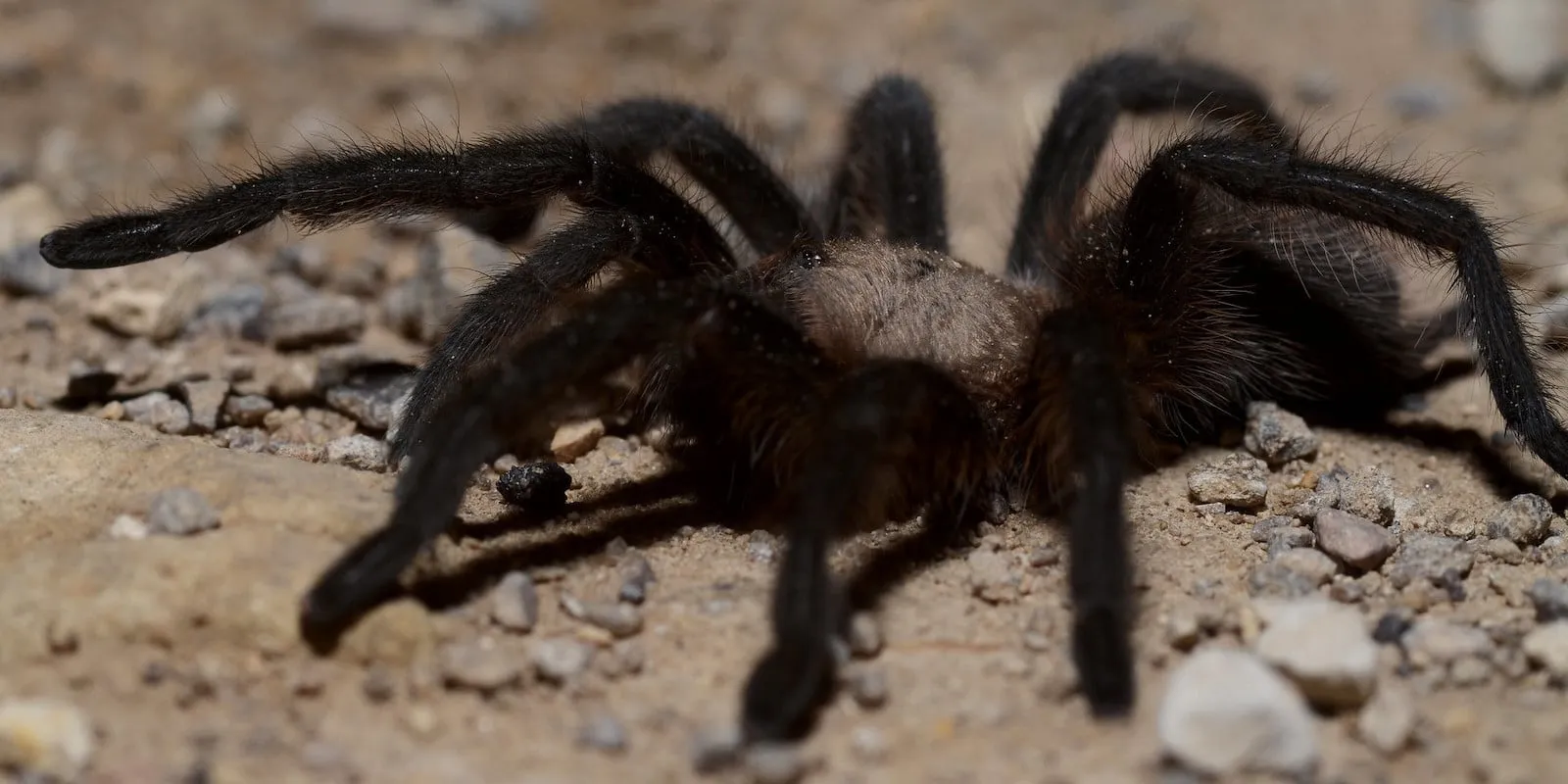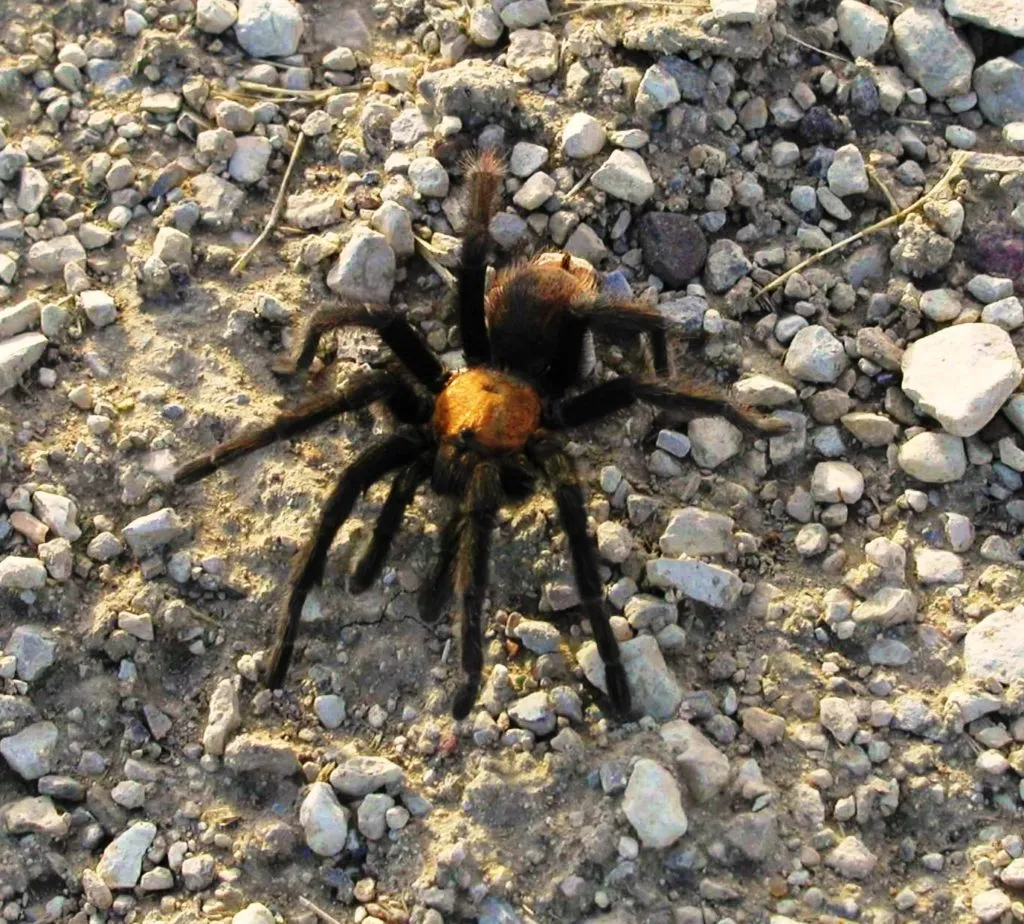What is the La Junta Tarantula Migration?
The La Junta Tarantula Migration is a remarkable natural phenomenon where thousands of tarantulas, primarily the Oklahoma Brown Tarantula (Aphonopelma hentzi), embark on a journey. This annual event typically occurs in late summer and early fall, usually around September and October, in and around La Junta, Colorado. During this time, the male tarantulas leave their burrows in search of mates. This mass movement creates a spectacle of nature enthusiasts and photographers alike. The sheer number of spiders on the move is a sight to behold, making La Junta a prime location for observing this unique behavior. This migration isn’t just a fascinating event; it’s a crucial part of the tarantula’s lifecycle, ensuring the continuation of their species. The tarantulas’ determination and endurance is astonishing.
Understanding Tarantula Behavior
To truly appreciate the La Junta Tarantula Migration, understanding tarantula behavior is essential. These spiders are typically solitary creatures, preferring to live in burrows underground. Males, however, undergo a significant change during mating season. They become highly active, driven by the primal urge to reproduce. This behavior includes increased movement, and a willingness to travel long distances, often crossing roads and open spaces. Tarantulas are not inherently aggressive; they are generally docile unless provoked. They possess fangs and can bite if threatened, but their venom is generally not dangerous to humans, with effects similar to a bee sting. Understanding their habits, such as their nocturnal activity patterns, helps in safely observing and appreciating their migration.
What Triggers the Migration?

Several factors trigger the La Junta Tarantula Migration. The primary driver is the mating season. As the days shorten and temperatures begin to cool in late summer, male tarantulas reach maturity and begin their search for mates. This biological imperative is the strongest trigger. Environmental factors such as rainfall and humidity also play a role. These conditions create favorable conditions for the tarantulas, as the moisture helps soften the ground, making it easier for them to move. The availability of potential mates also influences the timing and intensity of the migration, and the presence of mature females ready to mate is a driving factor. The combination of these elements creates the perfect conditions for this annual display of nature.
Best Times for Witnessing the Migration
Timing is everything when it comes to witnessing the La Junta Tarantula Migration. The peak migration season typically falls within September and October, but can vary slightly depending on weather conditions. Warm, humid days tend to encourage greater activity. Planning your visit during this period is crucial for increasing your chances of seeing the tarantulas. Keep an eye on local weather forecasts and any announcements from local wildlife organizations, as they often provide updates on migration activity. Early mornings and late afternoons are often the best times for observation, as the spiders are most active during these cooler parts of the day. Being prepared and flexible will maximize your opportunity to witness this incredible event.
Peak Migration Season
The peak of the La Junta Tarantula Migration usually occurs during a few weeks in the fall. This is when the largest number of male tarantulas are actively seeking mates. The exact timing varies from year to year, so it’s important to be informed. Check recent wildlife reports and local news, and consider planning your visit for the middle of September and October to have the highest chance of viewing the migration. Weather conditions during this period, such as temperature and rainfall, can significantly influence the intensity of the migration. Keep in mind that even within the peak season, activity can vary day to day, so flexibility in your schedule is advisable.
Time of Day to Observe

The best time of day to observe the La Junta Tarantula Migration is often in the early morning or late afternoon. During these times, temperatures are cooler, which makes it easier for the tarantulas to move. The reduced sunlight at these times also encourages the tarantulas to be more active, making them more visible. Avoid the hottest parts of the day, when the spiders may be seeking shelter from the sun. Plan your observation times to coincide with sunrise and sunset, when the lighting is also ideal for photography. Remember to bring appropriate gear, such as a flashlight or headlamp, if you are observing during dusk or dawn.
Ideal Locations to See the Migration
Identifying the ideal locations to witness the La Junta Tarantula Migration is crucial for a successful viewing experience. The areas surrounding La Junta, Colorado are the primary locations. Look for open areas with low vegetation, such as grasslands and fields, where the tarantulas are most likely to be found. Roadsides and dirt trails can also be productive areas, as the tarantulas often cross these paths. Areas with a high concentration of female tarantula burrows are good choices, as these are the destinations for the migrating males. Always be mindful of your surroundings, and avoid areas with heavy traffic or potential hazards. When exploring different locations, remember to respect private property and follow all local regulations.
Prime Viewing Spots
Some of the prime viewing spots for the La Junta Tarantula Migration are often along less-traveled roads and in open areas outside of town. Check local resources, such as visitor centers or wildlife organizations, for recommended areas. These resources may offer guided tours or provide information on recent sightings. Popular spots include areas with easy access and good visibility. Be aware that the spiders can be found anywhere within their migration path, so keeping your eyes open is essential. Always prioritize safety by parking in safe locations and being aware of traffic if observing near roads. Consider visiting during the weekdays to avoid the weekend crowds.
Accessibility and Safety

Accessibility and safety are paramount when planning your visit to witness the La Junta Tarantula Migration. The areas where the migration occurs may involve uneven terrain and potentially hazardous conditions. Ensure that you have appropriate footwear for walking. Be aware of the potential presence of other wildlife, such as snakes or other insects. It’s important to let someone know your plans and expected return time. Bring a first-aid kit, water, and sunscreen to deal with potential injuries or exposure to the elements. Consider traveling with a companion. Always maintain a safe distance from the tarantulas, and do not attempt to handle them. Your safety and the safety of the tarantulas must be your top priorities.
What to Bring and How to Prepare
Proper preparation is essential for a successful and safe viewing experience of the La Junta Tarantula Migration. The right gear and a thoughtful approach can significantly enhance your ability to enjoy this amazing natural event. Start with a well-stocked backpack and wear appropriate clothing, which includes sturdy shoes for walking on potentially uneven terrain. Dress in layers, as temperatures can fluctuate throughout the day. Be sure to pack plenty of water and snacks to stay hydrated and energized. Inform yourself about the local area, including weather conditions, and pack accordingly. Being well-prepared will allow you to focus on the experience and enjoy the spectacle of the tarantula migration.
Essential Gear
Essential gear for witnessing the La Junta Tarantula Migration includes sturdy footwear, such as hiking boots, to navigate uneven terrain. Bring appropriate clothing for varying weather conditions, including layers for warmth and protection from the sun. Don’t forget to bring a hat, sunglasses, and sunscreen. A flashlight or headlamp is essential if you plan to observe during early morning or late evening hours. A pair of binoculars can help you spot tarantulas from a distance, allowing you to observe them without getting too close. A camera is also recommended to capture the moment, but always prioritize the safety of the tarantulas and yourself. Pack a first-aid kit for any minor injuries, along with insect repellent to ward off mosquitos or other insects.
Safety Precautions

Safety precautions are critical when observing the La Junta Tarantula Migration. Maintain a safe distance from the tarantulas. While their venom is not typically dangerous to humans, bites can still be painful and cause an allergic reaction. Never attempt to handle or provoke the tarantulas. Be aware of your surroundings, and watch out for hazards such as uneven ground, thorny plants, or other wildlife. Inform someone of your plans, and let them know where you’ll be and when you expect to return. Carry a cell phone for emergencies, but be aware that reception may be limited in some areas. Always be respectful of private property, and follow all local regulations. Avoid parking in areas that could obstruct traffic or pose a safety risk.
Ethical Viewing Guidelines
Ethical viewing practices are essential for ensuring the preservation of the La Junta Tarantula Migration and its habitat. Respect the tarantulas and their environment by observing them from a distance. Avoid disturbing their natural behaviors, such as mating or hunting. Do not remove or relocate tarantulas, as this can disrupt their delicate ecosystem and behavior. Stay on marked trails and avoid trampling vegetation. Pack out everything you pack in, and leave no trace of your visit. Educate yourself and others about the importance of tarantulas and their role in the ecosystem. Support local conservation efforts and organizations working to protect these amazing creatures and their habitat.
Respecting the Tarantulas
Respect for the tarantulas is central to the ethical viewing guidelines. Observe the tarantulas from a distance, allowing them to behave naturally without disturbance. Avoid blocking their path or interfering with their movements. Do not attempt to touch or handle the spiders. Their health and well-being are critical, so prioritize their safety over your desire for a closer look. Avoid making loud noises or sudden movements that could scare or stress them. Remember that you are a guest in their habitat, and act accordingly. By respecting the tarantulas, you help ensure that future generations will have the opportunity to witness this incredible event.
Minimizing Disturbance

Minimizing disturbance is essential to protect the tarantulas and their habitat. Stay on marked trails, and avoid wandering off-path, which can damage vegetation and disrupt the spiders’ environment. Avoid using flash photography, as sudden bright lights can be disruptive to the tarantulas. Keep noise levels to a minimum, and refrain from playing music or making loud noises that could scare or disorient them. If you’re with a group, stay together and move calmly. Avoid leaving behind any trash or food, as these can attract unwanted animals. By practicing responsible viewing habits, you help ensure that the La Junta Tarantula Migration remains a pristine and remarkable natural event.
Photography Tips for Capturing the Moment
Capturing the La Junta Tarantula Migration through photography requires a combination of patience, technique, and respect for the subject. Use the appropriate camera settings to capture sharp, clear images of the spiders. Bring the proper equipment, such as a macro lens, which will enable you to capture the details of the tarantulas. Plan your shots and anticipate the spiders’ movements. Focus on their natural behavior, and tell a story with your images. Practice ethical photography, by keeping your distance and avoiding any actions that could disturb or harm the tarantulas. Photography is a great way to commemorate and share the experience of this remarkable event.
Camera Settings and Techniques
The right camera settings are critical for successful photography of the La Junta Tarantula Migration. Use a high shutter speed to freeze the action of the tarantulas, especially when they are moving. If you are using a digital SLR or mirrorless camera, consider using a wide aperture (low f-number) to create a shallow depth of field, blurring the background and isolating your subject. Adjust your ISO settings to compensate for lighting conditions, but keep it as low as possible to minimize noise in your images. Using a macro lens will enable you to capture the detail of the tarantulas. Use a tripod or monopod to keep your camera steady. Experiment with different angles and compositions to capture the spiders in their natural environment.
Tips for Photographing Tarantulas

When photographing tarantulas during the La Junta Migration, it’s essential to be patient and respectful of the subjects. Approach the tarantulas slowly and calmly, and avoid making any sudden movements that could startle them. Focus on capturing their behavior and the environment, rather than simply taking close-up pictures. Try to capture the tarantulas in their natural habitat, showing them crossing roads or fields. Pay attention to the lighting and composition to create visually appealing photographs. Remember to prioritize the tarantulas’ well-being. Keep a safe distance, and avoid using flash photography, which can disturb their behavior. Take the opportunity to document and share the wonders of this natural event.
Post-Migration: What Happens Next?
After the La Junta Tarantula Migration concludes, the tarantulas return to their regular lives. The male tarantulas, having completed their mission to find a mate, will often die soon after. The female tarantulas will retreat back to their burrows, where they will lay their eggs and continue their life cycle. The environment returns to its normal state. The cycle will repeat the following year. The La Junta Tarantula Migration provides a fascinating glimpse into the natural world, showcasing the beauty and resilience of these amazing creatures. By understanding and respecting the natural processes at work, we can ensure that this spectacular event continues for generations to come.
